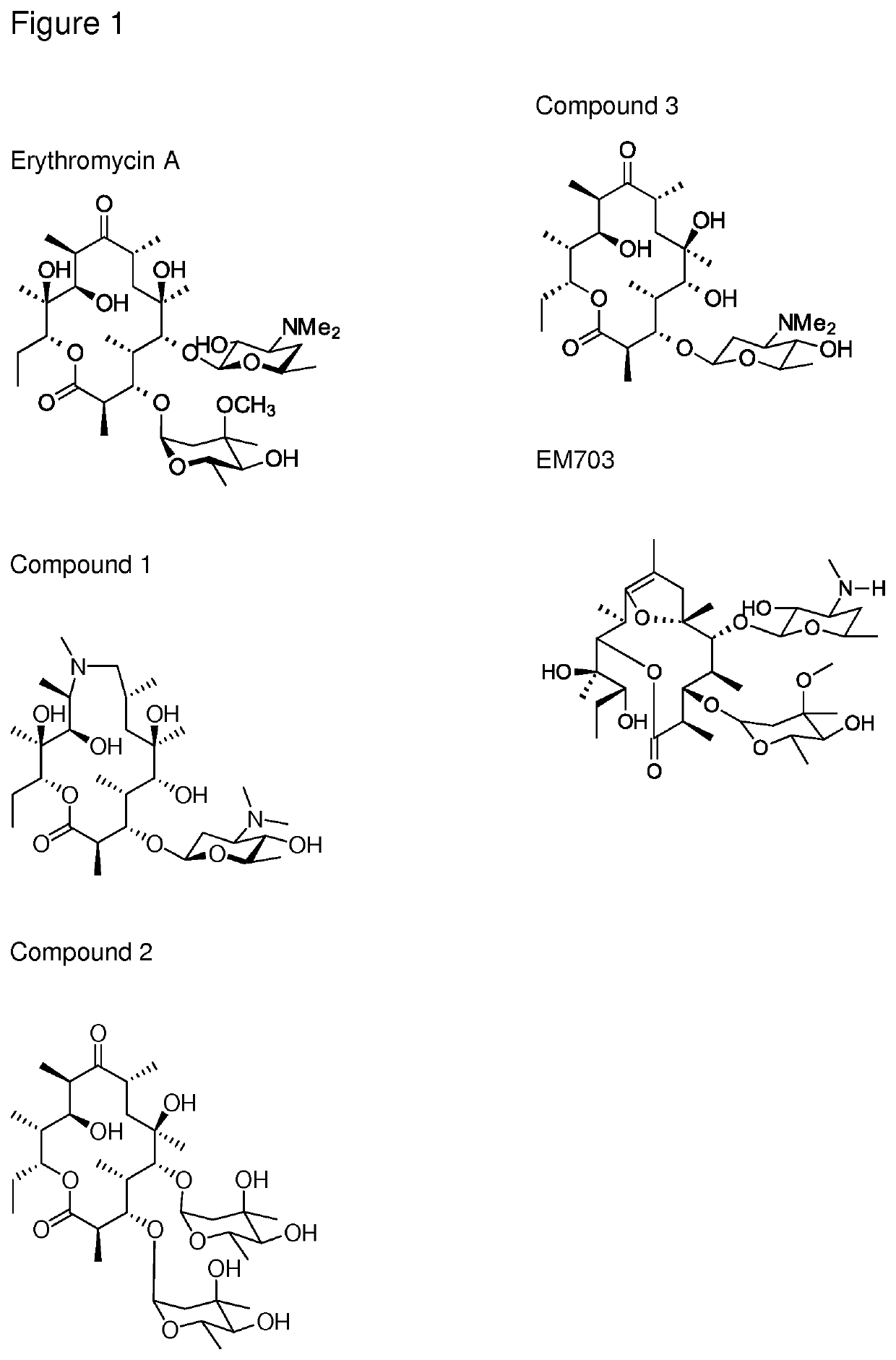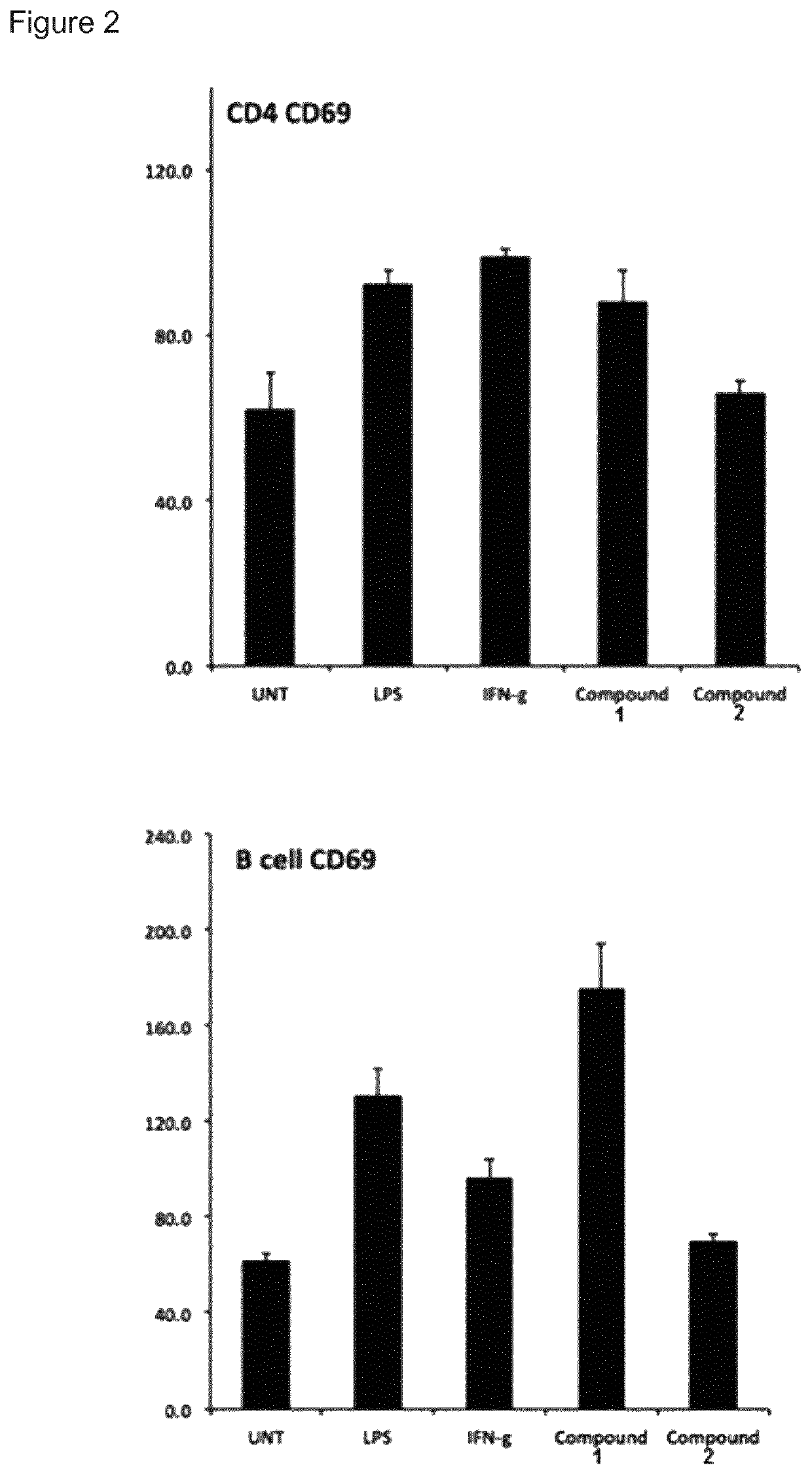Immune stimulating macrolides
a technology of immune system and macrolide, which is applied in the field of new drugs, can solve the problems of impaired loading and presentation of mhc class ii peptides derived from mtb, system failure to create sterilizing immunity, and death in patients
- Summary
- Abstract
- Description
- Claims
- Application Information
AI Technical Summary
Benefits of technology
Problems solved by technology
Method used
Image
Examples
example 1
on of Compound 1
[0150]
[0151]Preparation of Azithromycin Aglycone (Az-AG) (1a)
[0152]Azithromycin aglycone (1a) was generated using methods described in the literature (Djokic et al. 1988). In brief, azithromycin is converted to azithromycin aglycone by the acidic removal of the 3-O and 5-O sugars. The 5-O amino sugar is first oxidised and pyrolyzed to facilitate cleavage.
[0153]Generation of Biotransformation Strains Capable of Glycosylating Erythromycin Aglycones (Erythronolides):
[0154]Generation of S. erythraea 18A1 (pAES52)
[0155]pAES52, an expression plasmid containing angAI, angAII, angCVI, ang-orf14, angMIII, angB, angMI and angMII along with the actII-ORF4 pactI / III expression system (Rowe et al., 1998) was generated as follows.
[0156]The angolamycin sugar biosynthetic genes were amplified from a cosmid library of strain S. eurythermus ATCC23956 obtained from the American Type Culture Collection (Manassas, Va., USA). The biosynthetic gene cluster sequence was deposited as EU03827...
example 2
on of Compound 3 (Known Compound—Corresponds to Compound 17 in Schell et al., 2008)
[0181]
[0182]Erythronolide B (3a) can be generated by fermentation of strains of S. erythraea blocked in glycosylation, such as strains and processes described, for example, in U.S. Pat. No. 3,127,315 (e.g. NRRL2361, 2360, 2359 and 2338), Gaisser et al 2000 (e.g. S. erythraea DM ΔBV ΔCIII.
[0183]Erythronolide B (3a) was then fed to a biotransformation strain capable of adding angolosamine to the 3-hydroxyl (such as NCIMB 42718) and compound 3 was isolated from the fermentation broth by standard methods.
example 3
on of Compound 4
[0184]
[0185]Azithromycin B aglycone (4a) was generated by hydrolysis of the sugars from azithromycin B in the same way as for azithromycin A.
[0186]Azithromycin B aglycone (4a) was then fed to a biotransformation strain capable of adding angolosamine to the 3-hydroxyl (such as NCIMB 42718) and isolated from the fermentation broth using standard methods.
PUM
| Property | Measurement | Unit |
|---|---|---|
| pH | aaaaa | aaaaa |
| pH | aaaaa | aaaaa |
| time | aaaaa | aaaaa |
Abstract
Description
Claims
Application Information
 Login to View More
Login to View More - R&D
- Intellectual Property
- Life Sciences
- Materials
- Tech Scout
- Unparalleled Data Quality
- Higher Quality Content
- 60% Fewer Hallucinations
Browse by: Latest US Patents, China's latest patents, Technical Efficacy Thesaurus, Application Domain, Technology Topic, Popular Technical Reports.
© 2025 PatSnap. All rights reserved.Legal|Privacy policy|Modern Slavery Act Transparency Statement|Sitemap|About US| Contact US: help@patsnap.com



